The Sky Is NOT Falling: Thoughts on Hyatt’s New Award Rates
If you’ve been around any of the travel blogs over the past week or so, you may have noticed a bit of a freak out over some changes Hyatt is making to their award program. If you haven’t, surprise! Hyatt is making some changes to their award chart.
While many bloggers got their posts quickly (and good ones at that), I decided to take my time. That’s not to say that there’s anything wrong with that approach. I just decided to go a different route. Instead of rushing to get my thoughts out there, I wanted to take a few days to let the changes sink in. I wanted to look at this with a clear, non-objective mind before sharing my thoughts on this.
What’s Changing?
Last week, Hyatt officially announced they would be adding peak and off-peak award pricing, starting in March 2020. Effective March 2020, Hyatt’s new award chart will be as follows:
Currently, Hyatt prices everything at the standard rate.
The good news is that the standard rates will not be changing. In addition, Hyatt plans to announce their peak and off-peak dates 13 months in advance. That’s quite the departure from what Marriott currently does with their peak and off-peak pricing. However, it’s unclear whether those dates will differ by destination or property.
Who is this bad for?

Ultimate Rewards points are great for stays at Hyatt properties like the Park Hyatt Tokyo (courtesy of Hyatt.com)
The people hardest hit by this are going to be those with little flexibility in their travel plans. Families with limited travel windows will likely be stuck having to pay peak rates.
Also, if you typically redeem for Hyatt’s top-end properties, this could be bad news. While it hasn’t been announced, there’s every possibility that high-demand properties will spend the majority of the year. This could be especially true at destinations like the Park Hyatt Maldives.
Who is this good for?
Ok, now that we’ve got the bad news out of the way, let’s take a step back. This isn’t all bad news. If you’ve got flexibility in your dates, you could end up paying less than you were previously.
I know quite a few of you let the deal decide your destination and dates rather than the other way around. If that’s how you travel, you should be able to snag some fantastic properties on the cheap.
You shouldn’t be too concerned though – there’s still a baseline
One of the best parts of transferrable points currencies is the flexibility they give you. At the very least, you’ll have a minimum cash value of those points. At the best, you’re able to get outsized value by transferring to an airline or hotel loyalty program.
For the most part, transferring to hotel programs is a pretty lousy value. The only flexible points currency transferring to hotels really makes sense with is Chase Ultimate Rewards. Chase is the only transferrable currency that partners with Hyatt. Given the high value of Hyatt’s rewards program, it represents one of the best uses of Ultimate Rewards points. You can really get outsized value at some of Chase’s higher end properties like the Park Hyatt Tokyo or Andaz Maui.
There’s certainly the potential for this change to have a negative impact on you. However, if you hold the Chase Sapphire Reserve Card, you’re more or less protected from further devaluations to the program. With the Sapphire Reserve, you’re guaranteed a minimum redemption rate of 1.5 cents per point when booking through the Chase Travel Portal. If the value of a redemption with Hyatt is less than that, you can just book the hotel through the travel portal for better value.
To show you what I mean, let’s take a look at the rates for a few Hyatt properties in London this January.
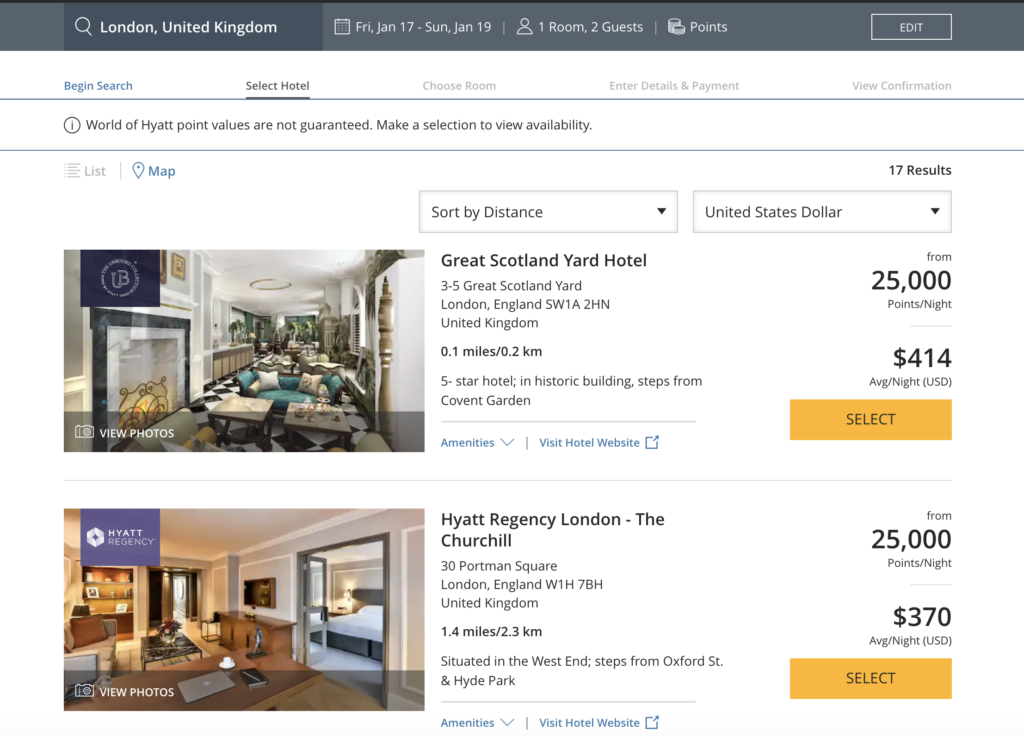 The cash rate at the Great Scotland Yard Hotel is $414/night or 25,000 points. If you booked using Hyatt points, you’d be getting a value of 1.66 cents per point. In this case, it makes sense to transfer your Chase points to Hyatt because you’d get a better rate. Booking through the Chase Travel Portal would cost 27,600 points instead. In this case, you’d save 2,600 points by transferring points.
The cash rate at the Great Scotland Yard Hotel is $414/night or 25,000 points. If you booked using Hyatt points, you’d be getting a value of 1.66 cents per point. In this case, it makes sense to transfer your Chase points to Hyatt because you’d get a better rate. Booking through the Chase Travel Portal would cost 27,600 points instead. In this case, you’d save 2,600 points by transferring points.
Right below it is the Hyatt Regency London – The Churchill. While the hotels both go for the same amount of points, the cash rate is a little lower. Using Hyatt points, you’d get a value of 1.48 cents per point. While it’s a nominal difference, it makes more sense to book through the Chase Travel Portal, as you’d save about 300 points and earn Hyatt points back.
However, let’s take a look at more dramatic case. Maybe you have an early morning flight out of Heathrow and just need a place to crash nearby. The Hyatt Place Heathrow seems like a suitable option. Just don’t use your Hyatt points to stay there!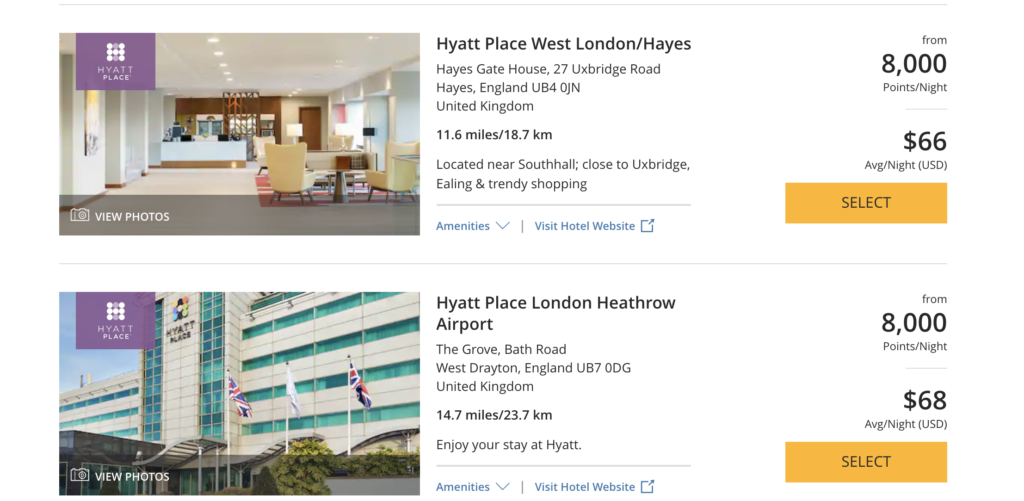
Using Hyatt points, you’d get a paltry value of 0.85 cents per point. Sheesh. You’d definitely want to book through the Chase Travel Portal, as that would only cost 4,500 Ultimate Rewards points. That’s nearly 50% less!
What you should really be concerned about
A few weeks ago, Hyatt announced that they’d be bringing on even more Small Luxury Hotels (SLH), bringing their total up over 250 hotels. SLH is a collection of luxury boutique hotels, with some really unique, high-end properties around the world. As part of this partnership, World of Hyatt members will be able to redeem Hyatt points for even more top notch properties. Sounds great, right? Well, not so fast.
As part of this announcement, Hyatt also rolled out a new award category – Category 8 hotels. This new award category prices out at 40,000 points per night – 10,000 more than the current top level. Given the cost of some of these properties, that’s not totally unreasonable. After all, Hyatt is currently only using this new category for very high-end SLH properties. Thankfully, no new properties have moved to category 8 with the planned award changes. However, one can see how this could slowly creep into their own high-end properties.
If some of Hyatt’s top properties begin to move to Category 8, that would represent a 33% increase on the standard rate and 50% increase on peak dates. That’s a tough pill to swallow, regardless of how you look at it.
Final Thoughts
Obviously, no one likes when award prices go up. Unfortunately, that’s the continuing trend in loyalty programs. That being said, overall, these changes aren’t that bad.
It’s true that generally, most changes to award programs are negative for members. However, we have a tendency to be a bit dramatic when it comes to these. In the blogosphere, we often claim the sky is falling every time there’s a change to an award program. The truth is, not every change is as bad as people make it out to be. Are program changes ever as good as corporate PR spin? No. Do negative changes stink? Sure. The truth is usually somewhere in between though.
We’re here to share our thoughts and help keep you up to date on the latest and most important travel news. However, it’s up to you to sort through the facts, look at your own situation, and form your opinion. I have my concerns about some of the long-term implications of these changes. In the short-term though, there are going to be some people hurt by this change and others helped by it. If that’s the case, chances are the changes probably aren’t all that bad. I’m sure some of you will probably disagree with me in the comments though 🙂

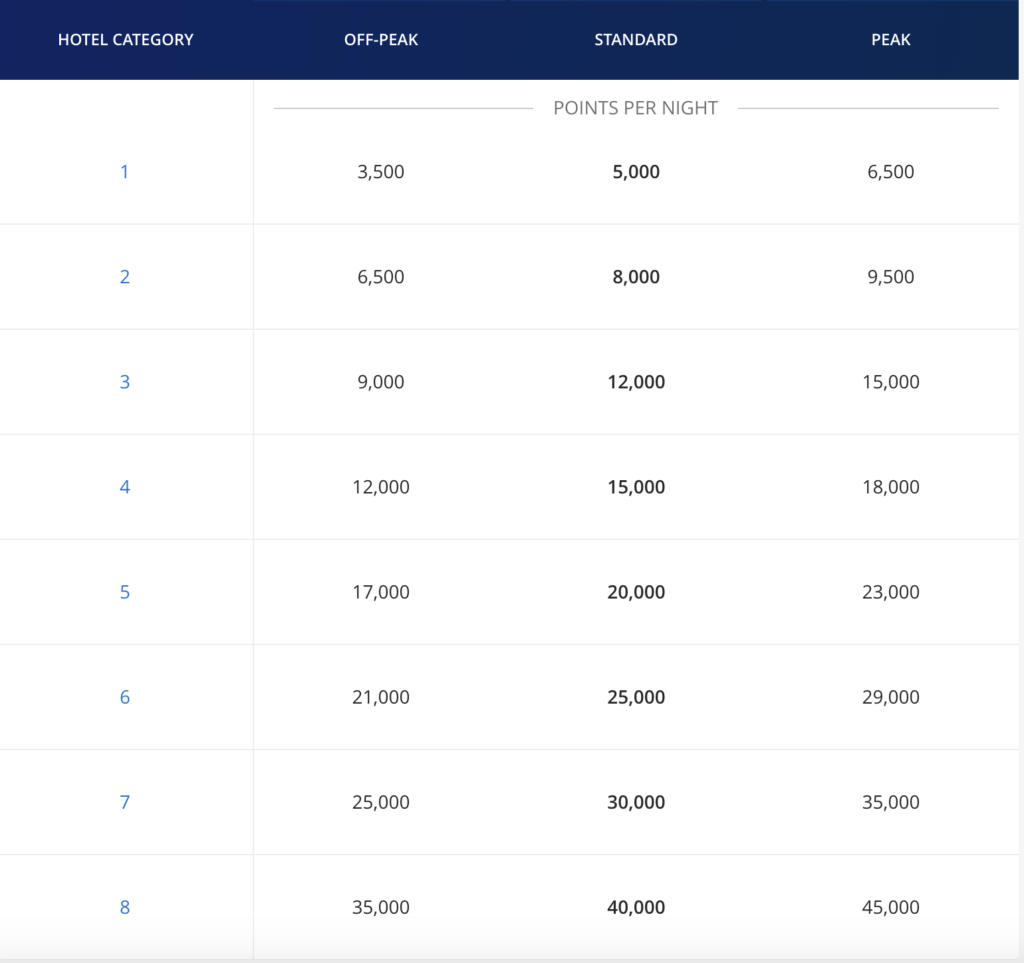
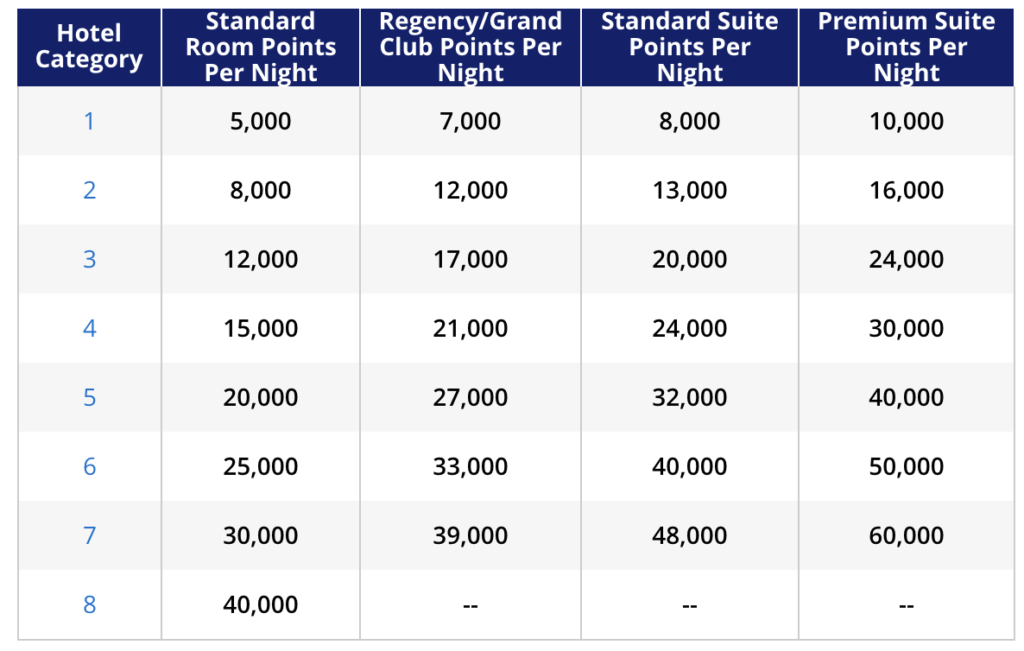


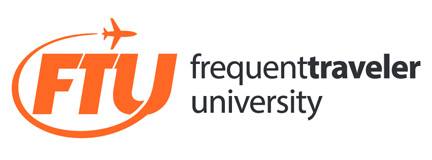



December 9, 2019
Good post.
December 10, 2019
The people getting beat up the most with the new system are the ones who hunt for good value. While the fact is that the people hunting for the best value are getting burned the worst, what is even more concerning is that Hyatt is effectively going to dynamic pricing. Anyone who loves that with Delta should be thrilled, but normal humans will be concerned, particularly since there are zero minimum days of off-peak nights in Hyatt’s new system. Also, how tempting will it be for Hyatt to do what Hilton did and destroy the concept of the award chart in order to make stealth devaluations easier? The sky may not be falling but there’s a lot more downside than bloggers are saying.